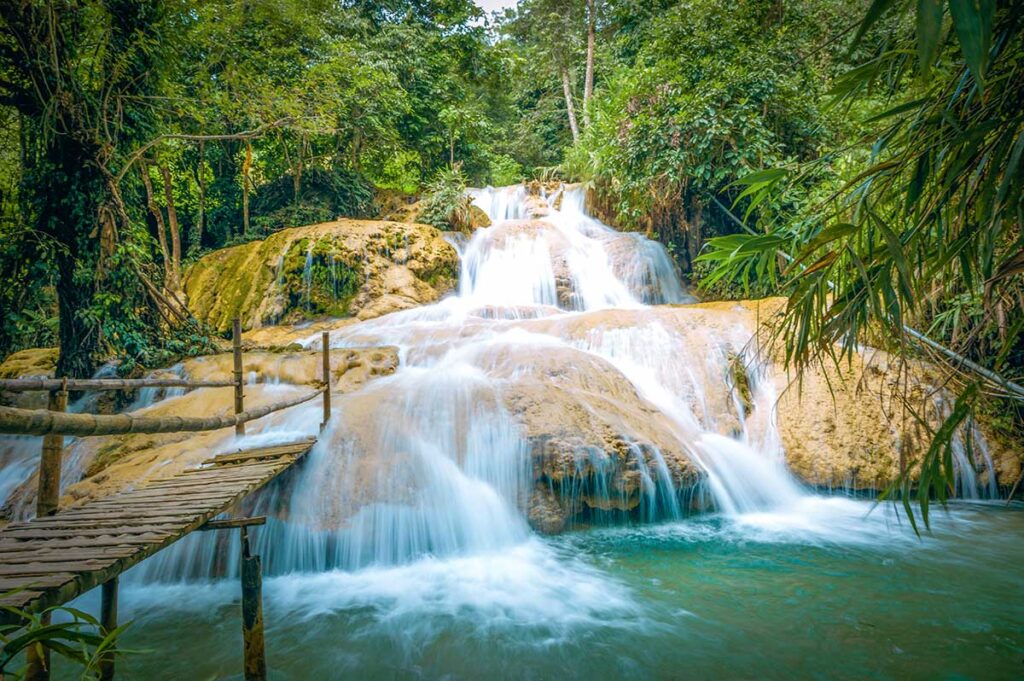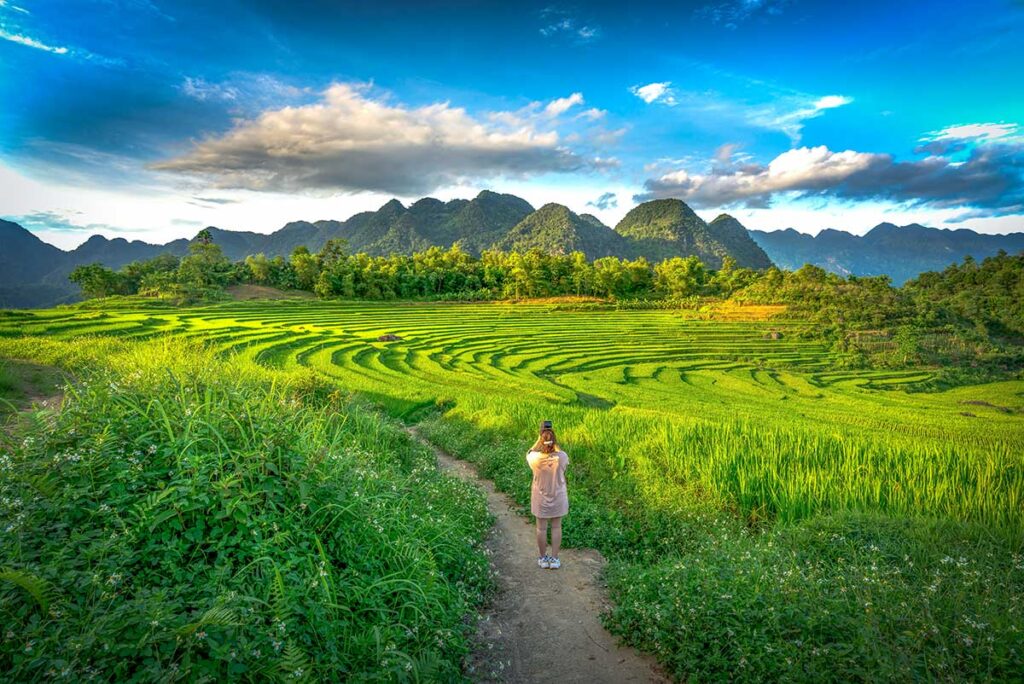What is Hieu Waterfall like?
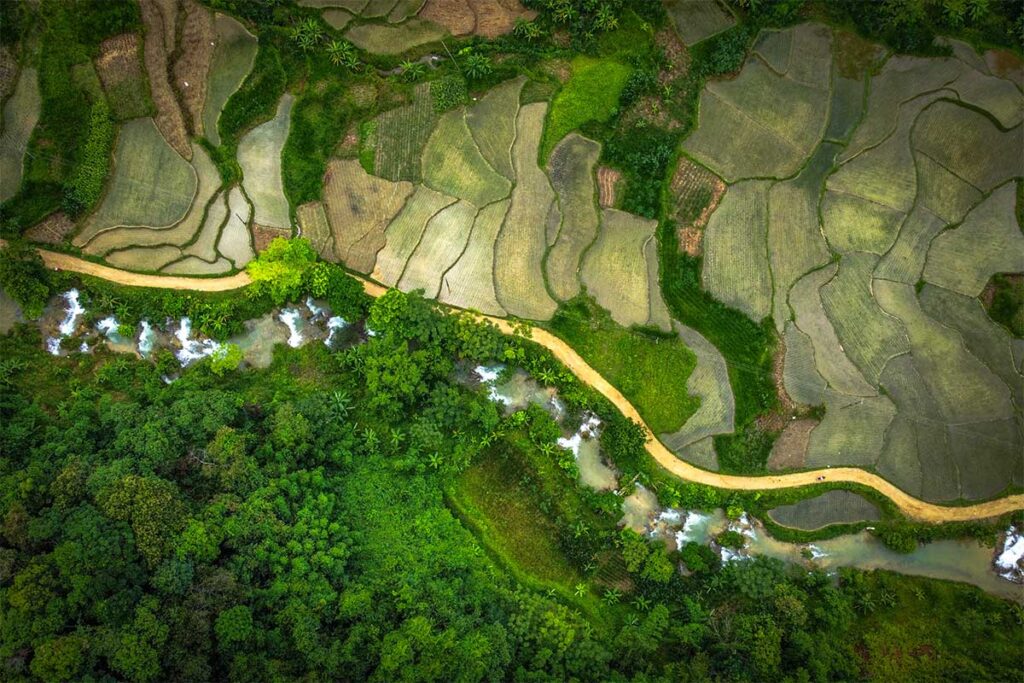
Hieu Waterfall is located in Hieu Village, a quiet settlement within Pu Luong Nature Reserve in Thanh Hoa Province. The waterfall stretches along a stream that tumbles gently down a forested slope, forming a series of small cascades rather than one dramatic drop. Its appearance changes with the seasons—during the rainy months, the flow is strong and ideal for swimming, while in drier months it may shrink to a trickle.
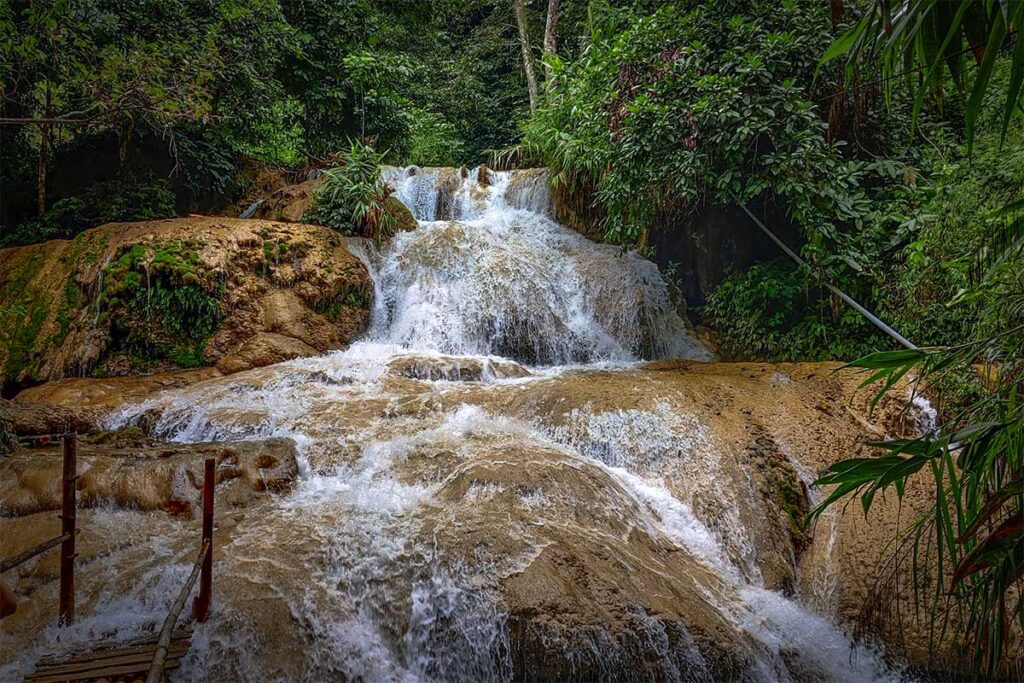
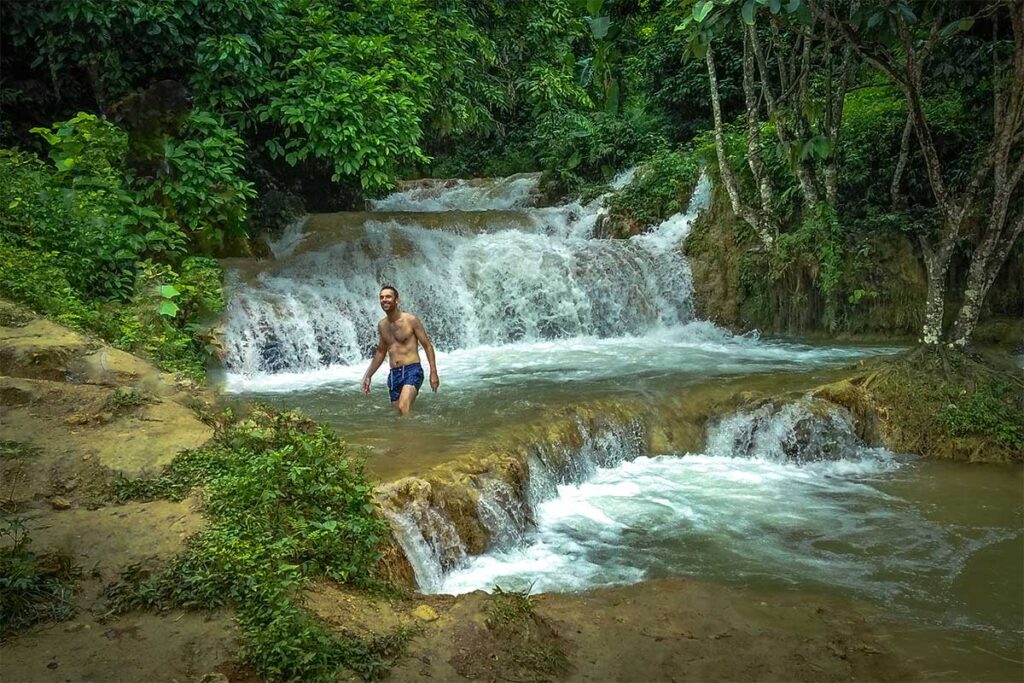
The surrounding setting is part of the appeal: lush jungle, bamboo groves, and traditional Thai stilt houses line the valley. Several natural pools form along the stream, making it a refreshing place to cool off after a hike. A handful of lodges and homestays in Hieu Village sit right by the falls, allowing for easy access and peaceful overnight stays. For many travelers, Hieu Waterfall is the final destination on a day trek through Pu Luong’s rice terraces and ethnic minority villages.
The legend of Hieu Waterfall
According to local legend, a man from Leo Village once discovered the waterfall while walking through the forest. He was so taken by the peaceful surroundings that he decided to settle there with his wife. On the day they welcomed their new neighbors, a herd of deer came down to drink from the stream — a rare and symbolic moment. The villagers saw it as a sign of harmony with nature and named the area “Hieu,” meaning “deer” in the local language.
Best time to visit Hieu Waterfall
The experience at Hieu Waterfall can vary quite a bit depending on the season. During the dry season (November to April), the weather is cooler and the trekking trails are easier to manage, with clearer skies and less mud. However, water levels often drop—especially in spring (March to April)—so the falls may be smaller and less impressive.
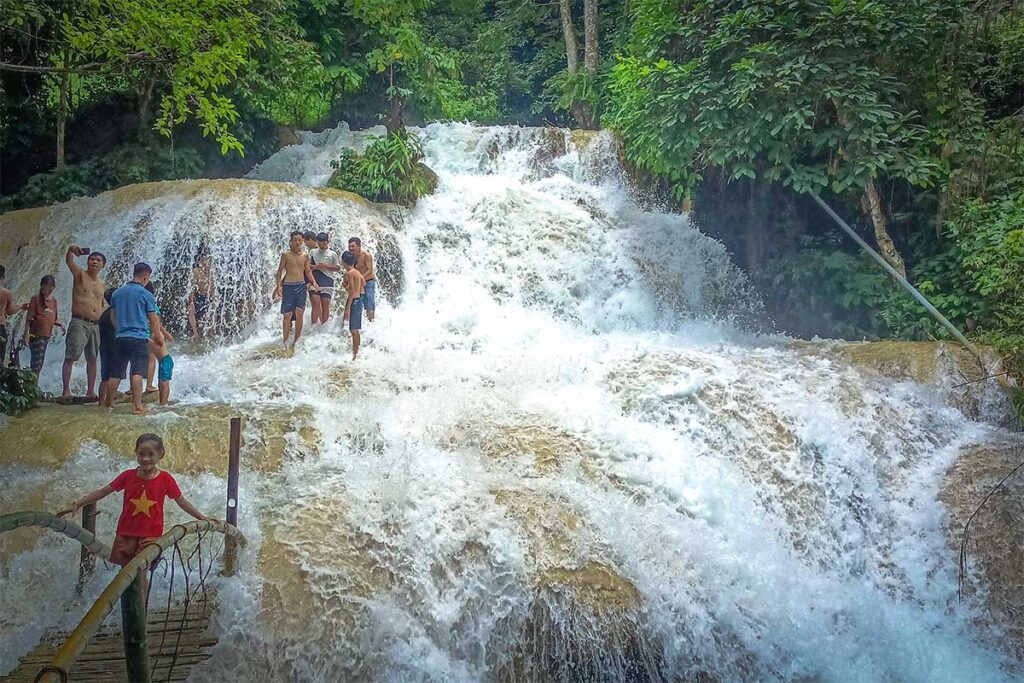
In contrast, the rainy season (May to October) brings a much stronger water flow, making it ideal for swimming and photography. The weather is hotter and more humid, but the landscape is at its greenest and most alive. Do note that the coldest months (December to February), while dry, often make swimming unappealing due to the chilly water temperatures.
It’s also worth planning your visit around Pu Luong’s rice harvests, which shape the surrounding scenery. Fortunately, unlike Sapa, Pu Luong has two harvest seasons a year, so you have more chances to see the terraces at their greenest or golden peak. For more on that, check our separate guide on the Best Time to Visit Pu Luong.
Things to do around Hieu Waterfall
1. Enjoy the scenery
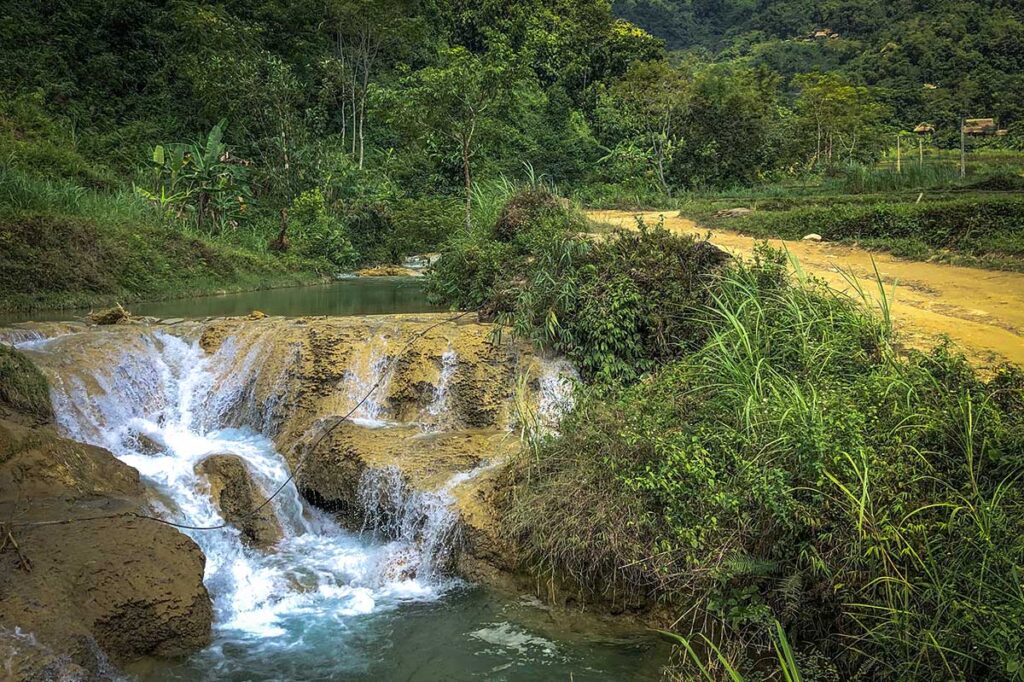
The area around Hieu Waterfall is quiet, green, and shaded by trees — a peaceful place to take a break from trekking or the heat. You can sit on the rocks, listen to the sound of the stream, and enjoy the natural surroundings. It’s also a nice spot for simple nature photography or a casual picnic if you’ve brought snacks.
2. Take a swim
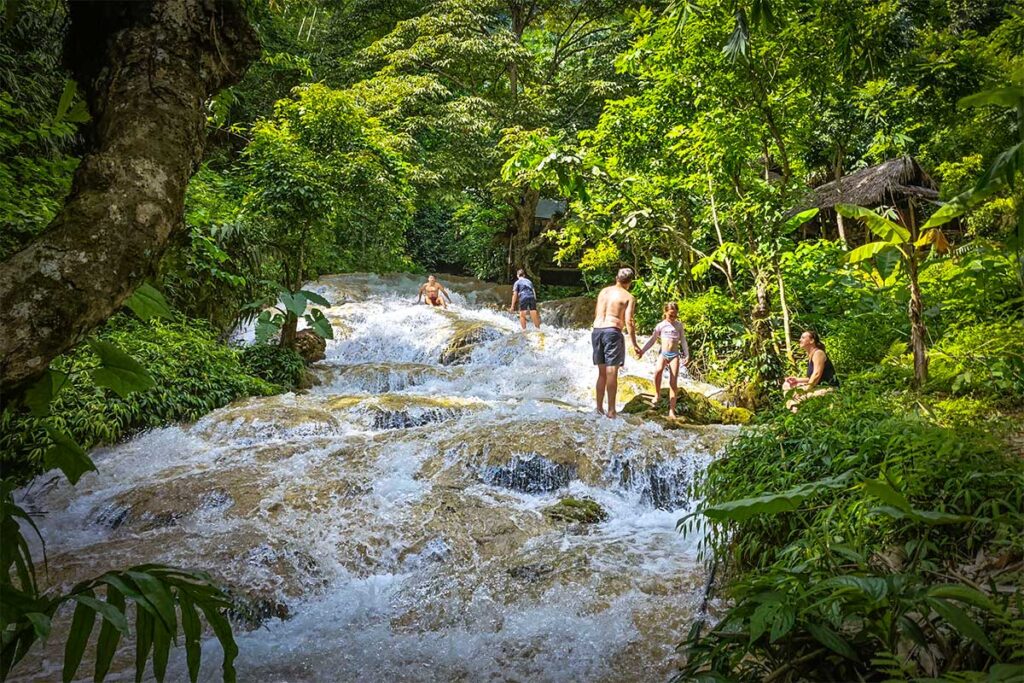
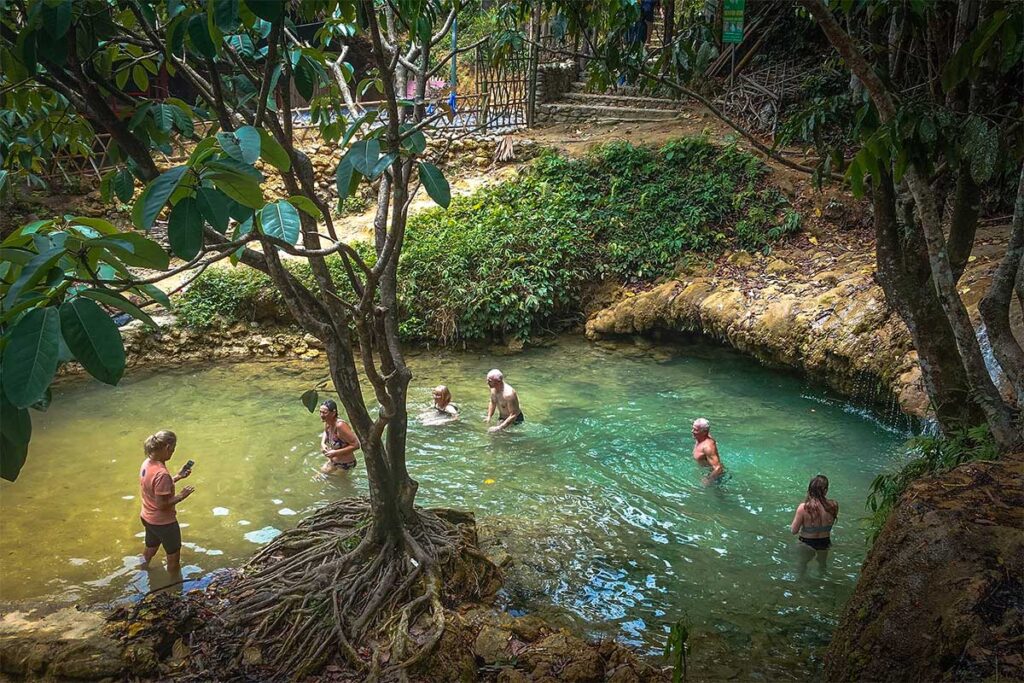
On hot days, the cool water is especially inviting. The falls form several small pools that are great for a dip, especially after rain when the flow is stronger. There are no developed facilities here — it’s all natural, so watch your step. The rocks can be slippery in places, and swim shoes are helpful if you want to wade in more comfortably.
3. Make it part of a trek
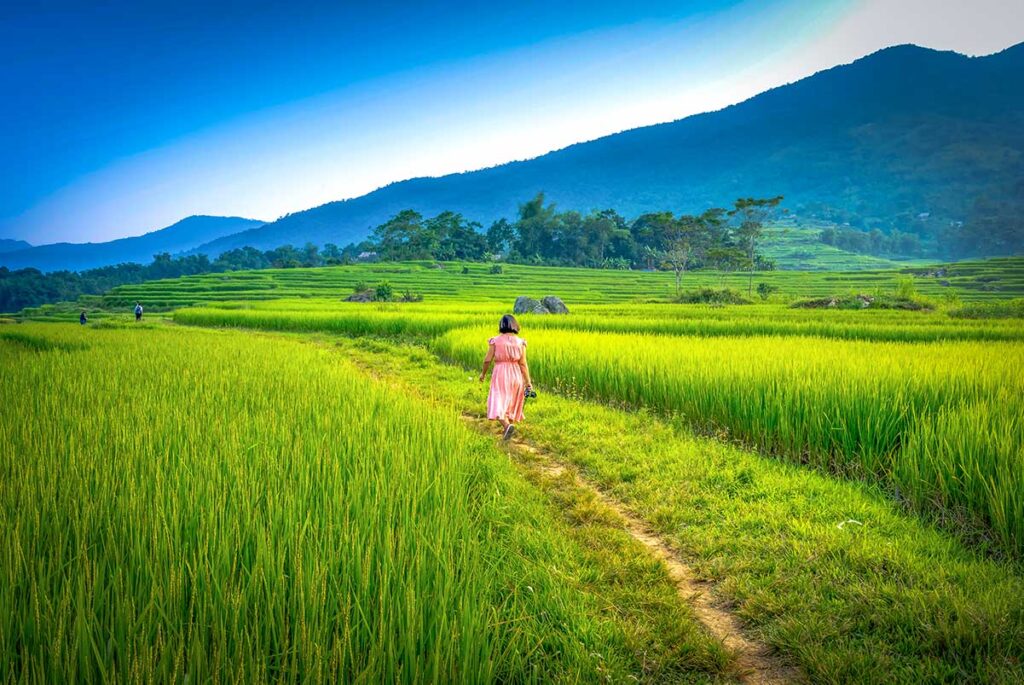
Most people visit Hieu Waterfall as part of a guided trek through Pu Luong. These walks typically pass through rice terraces, bamboo forests, and ethnic minority villages before ending at the falls — a great place to cool down. Treks are usually arranged by local guides who know the best trails and can organize pickup after you reach the waterfall.
3. Explore Hieu Village
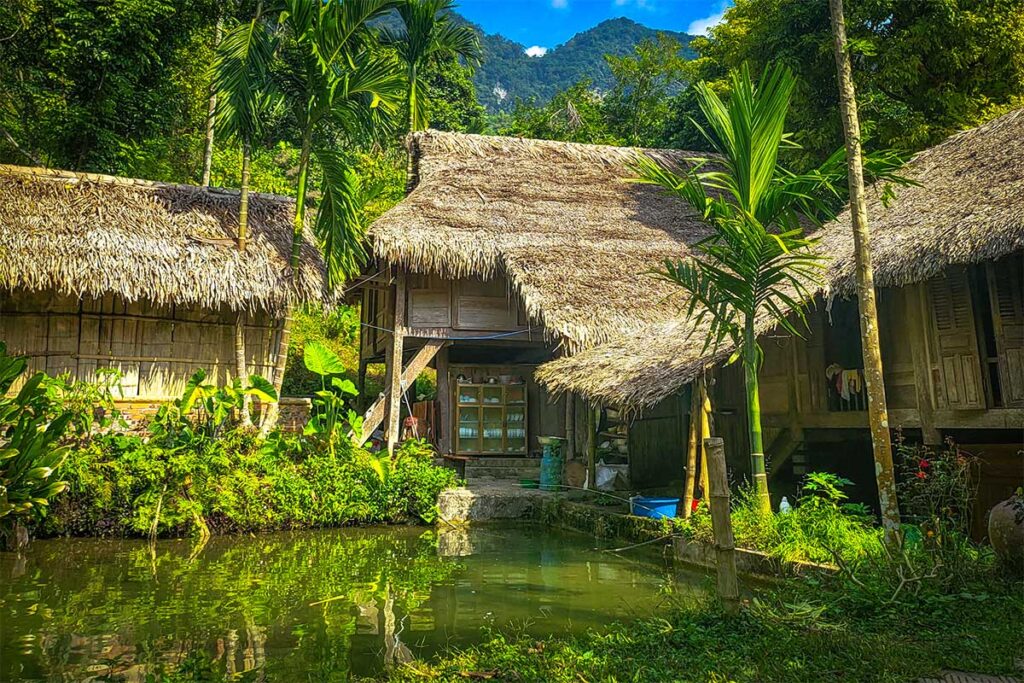
Hieu Village is home to Thai ethnic minority families who live in traditional wooden stilt houses. It’s a peaceful and authentic setting, surrounded by rice fields and forest. If you’re staying overnight, it’s a great place to observe daily life, chat with locals (with the help of a guide or your host), and enjoy simple home-cooked meals.
How to get to Hieu Waterfall
First: Get to Pu Luong
Hieu Waterfall is located deep inside Pu Luong Nature Reserve, which is more remote than places like Ninh Binh or Sapa. Public transport is limited, so getting there requires some planning. If you haven’t already arranged your trip to the area, check out our guide: From Hanoi to Pu Luong.
Option 1: Trekking to the waterfall (most recommended)
This is by far the most rewarding way to visit. Many travelers hike to Hieu Waterfall as part of a full-day trek through Pu Luong’s rice terraces and villages. Treks are usually arranged by local guides and often end at the waterfall, where you can take a swim and then return by car arranged in advance. It’s scenic, active, and a great way to experience the area.
Tip: Have a look at our tours, that include transfers from Hanoi, trekking in Pu Luong with visits to Hieu Waterfall, as well as Bat Cave, bamboo rafting and stays in nice lodges overlooking the terraced rice fields.
Option 2: Renting a motorbike
A few homestays and lodges rent motorbikes or scooters, but availability is not guaranteed. The roads around Pu Luong are quiet, but not always well-paved — narrow mountain roads and steep sections make it suitable only for confident riders. If you go this route, you can ride all the way to Hieu Village and park near the falls.
Option 3: By Car
Getting to Hieu Waterfall by car is possible, but usually only if you’ve arranged a private driver in advance — either from Hanoi or as part of your Pu Luong transfer. Some lodges may also be able to organize a drop-off and pickup, especially if you’re staying nearby. Always check ahead, as cars are limited and the area isn’t set up for spontaneous transport.
Is Hieu Waterfall worth visiting?
Yes — as long as you go with the right expectations. Hieu Waterfall isn’t a dramatic or powerful cascade, and during dry months it can be little more than a trickle. But as part of a scenic trek or a cool-down spot after hiking through rice terraces, it’s a beautiful and relaxing place to visit.
It’s not worth traveling to Pu Luong just for the waterfall alone. However, if you’re already exploring the reserve, Hieu Falls is one of the area’s most well-known natural spots — especially nice on a hot day or when the water is flowing well.
Staying near Hieu Falls
Is it worth staying in Hieu Village?
Staying in Hieu Village isn’t necessary just to visit the waterfall — it’s easily included in a day trek from other parts of Pu Luong. The main reason to overnight here is the local experience and potential rice field views, not the proximity to the falls. A few homestays and lodges in the village are well-rated, offering a quiet, cultural stay with access to nearby terraces and forest trails. If you’re looking to experience rural village life, it’s a solid option — but for wider views and more central access to Pu Luong’s highlights, other areas might be a better base.
Accommodation options
While limited, Hieu Village has several options that combine traditional charm with scenic surroundings. Here are two of the better-known choices:
Duy Phuong Homestay
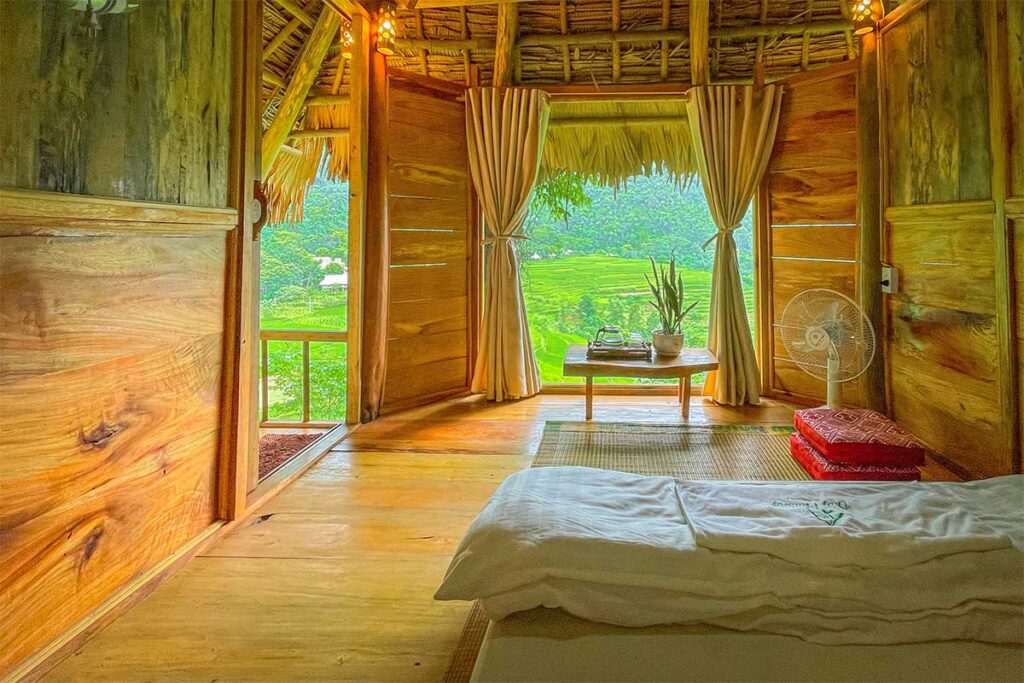
This small homestay offers simple hillside bungalows with panoramic views across the valley. The wooden interiors are charming and the food is home-cooked, but expect rustic features like open-air gaps and limited sound insulation.
Pu Luong Riverside Lodge
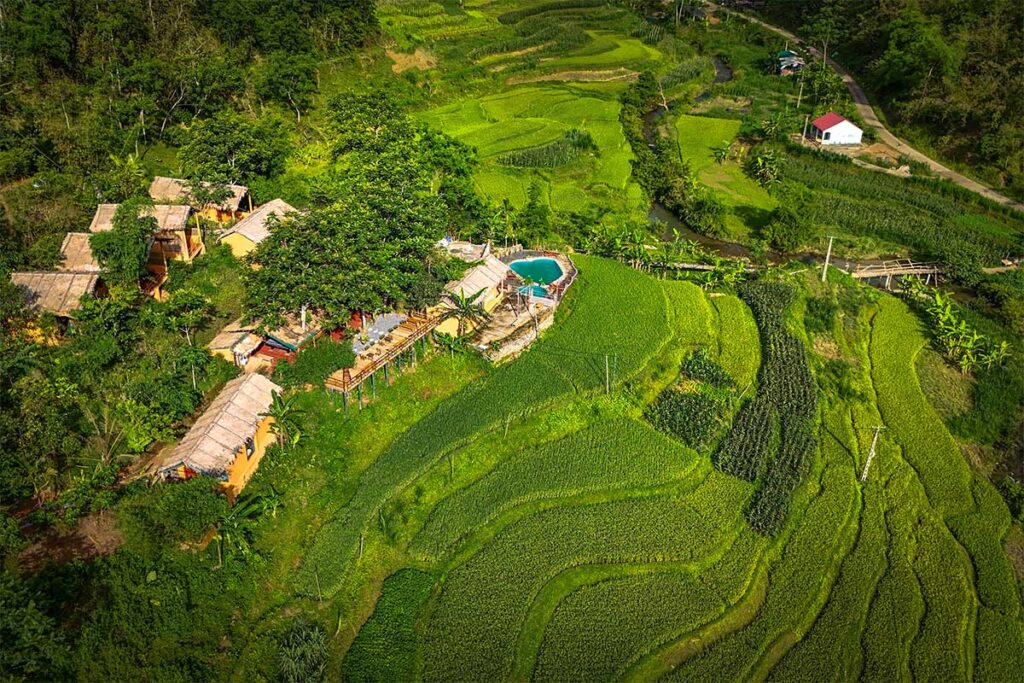
An eco-lodge tucked near the waterfall with clay-built rooms and a natural setting. Guests can join activities like cooking classes and short treks to the falls. Rooms are basic but comfortable, and the lodge has a relaxed, community-focused atmosphere.
Travel tips and What to bring
Swimwear & Towel
Bring your swimwear even if you don’t plan to swim — the cool water might tempt you after a hike. A quick-dry towel and swim shoes (or sandals with grip) will make the experience more comfortable, especially when walking on slippery rocks.
Footwear
Wear proper walking shoes or sandals with good grip. The trails can be uneven, and the stones around the waterfall can be slippery — especially the darker ones, which tend to be slicker when wet.
Sun and Insect Protection
If you’re trekking to the falls, expect some sun exposure along the way. Pack sunscreen, a hat, and insect repellent — especially useful in the early morning or late afternoon when mosquitoes are more active.
Bring cash
Most local shops, food stalls, and small homestays don’t accept cards. Entrance or parking fees may also apply, so it’s best to carry enough Vietnamese Dong in small denominations.
Consider a Local guide
Trails in Pu Luong can be confusing, and there are a few different access points to the waterfall. A local guide will help you stay on track, reach the best part of the falls, and often arrange transport back after the trek.
